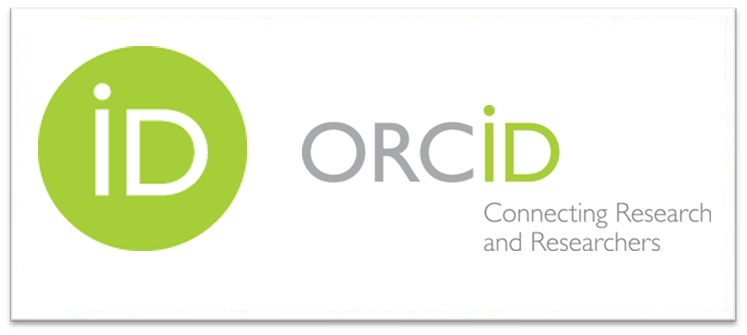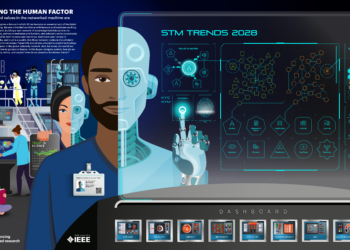 Few initiatives enjoy the widespread admiration of multiple communities within scholarly publishing. As funders try to keep track of the money, universities try to keep track of work done on their campuses, and publishers want to disambiguate the universe of scholarly authors, ORCID , the Open Researcher and Contributor ID is the “killer app.” Now is an important time for all of these communities to support ORCID with user education, membership, and integration.
Few initiatives enjoy the widespread admiration of multiple communities within scholarly publishing. As funders try to keep track of the money, universities try to keep track of work done on their campuses, and publishers want to disambiguate the universe of scholarly authors, ORCID , the Open Researcher and Contributor ID is the “killer app.” Now is an important time for all of these communities to support ORCID with user education, membership, and integration.
Conversations about ORCID (when to use, how to implement, when to support) are reminiscent of conversations years ago regarding CrossRef. Will enough publishers integrate and pay for membership? Will researchers use DOIs? Will the technology become the standard? Of course, we know the answer today because it is hard to imagine what things would be like without DOIs and other services provided by CrossRef.
Laurel L. Haak, PhD, Executive Director, of ORCID answers questions about the current status of ORCID implementation as well as the financial viability of the organization going forward.
Disclaimer: I am an ORCID Ambassador, which for me means that I promote the use of ORCID to engineers affiliated with ASCE. I am not an employee, nor am I compensated in any way, other than ORCID pens and laptop stickers to distribute.
Can you provide a current snapshot of where ORCID is as far as uptake of users, members, and new features added in the last 6-12 months?
ORCID launched its Registry in October 2012. We are on track to reach 1 million registrations at our 2-year anniversary. We have grown to over 150 members, almost half from academic or government research institutes, and one-quarter from the publishing sector; the remaining quarter is made up of research funders, professional and disciplinary associations, and repositories and research services companies.
Our core mission is to provide an open registry of unique, persistent, and resolvable person identifiers, coupled with Web services to enable research data exchange interoperability through integration of identifiers into research data systems and workflows. Our 1-year milestones are detailed in this blog post. In our second year, we have added functionality to enable connections between researchers and their degree-granting and employment institutions, connections with their funding awards, connections with ISNI, improvements to the user interface, ability to log onto other sites using ORCID credentials, and a public API that enables the community to obtain an iD in an authenticated way, allowing them to integrate ORCID iDs responsibly, regardless of their ability to pay a membership fee.
Several large universities have partnered with ORCID and are assigning iDs to faculty and students. Can you explain what the benefit is to a university in partnering with ORCID and how this will help the research community in general?
As mentioned earlier, universities and research organizations make up half of our membership. They are using ORCID to enable a variety of workflows, including linking graduate students with their theses and the degree-granting organization; populating and updating institutional repositories and faculty profile systems; and supporting institutional reporting. They are integrating ORCID iDs into publication and grants workflows, and adding the ORCID iD as an attribute into institutional human resource and identity management systems.
Either by creating records or facilitating their creation, universities can request permission from their faculty, staff, and students to both write information into records and to make assertions about information in an ORCID record—such as an assertion that the person is affiliated with the university. This assertion becomes a piece of the provenance on an ORCID record and helps to build up trust in the links in an ORCID record and further supports the use of these links in research and administration tasks. A number of universities presented on this work at our Outreach meeting last May. Presentations are available online.
Individuals may register for an ORCID and use the registry free of charge. What is the business model for ORCID? Where does the funding come from?
ORCID is an independent non-profit organization that provides a “public good” to the research community. As Josh Greenberg of the Alfred P. Sloan foundation noted at our May Outreach meeting, it is notoriously difficult to support these kinds of organizations. Many start out as projects supported by grant funding, but have no model for financial independence and sustainability. The ORCID Board very intentionally developed a sustainability plan for ORCID, and with support from the Mellon foundation developed a business model based on organizational membership. To realize this public benefit, we have to balance the need for sustaining revenue with the need for broad adoption, and work to keep barriers very low for individuals to register for and use an ORCID iD, and for organizations to take the first steps to integrate ORCID iDs using our APIs.
The ORCID membership model is fairly straightforward and is based on access to specific API data exchange features. The Basic category is the same price for any size organization, and a two-tiered Premium category provides enhanced benefits (described in detail on our membership page). We also have local and national consortium agreements, discounts for non-profit organizations, and deep discounts for small or start-up organizations.
All that said, membership takes some time to develop. Our goal is to generate annual revenue to support $2.5M in annual expenses by 2016. We are encouraged to be at about half of that now.
To supplement our revenue as we grow our membership, we have sought grant and loan opportunities. We got an initial boost in the form of loans from sponsor organizations, which enabled the hiring of ORCID staff. We benefited from a National Science Foundation sub-award, which supported the initial phase of software development for the launch of registry, and last year we were awarded a grant from the Alfred P. Sloan Foundation that supported a set of demonstration projects in the university and association communities.
ORCID seems to enjoy a universal acknowledgement of support. Researchers, publishers, societies, and universities all struggle with disambiguation, keeping track of users, and making sure everyone who deserves credit on a project gets credit. Even with this support, I have heard that there are some financial strains on the organization. What is the current financial status of ORCID?
ORCID has not yet reached financial sustainability and is in fact under a financial strain. We are very pleased with the “mindshare” and growing community support for ORCID, and are working very hard to translate mindshare into new memberships. We believe that we have the right business model: that the organizations that benefit from the added value of ORCID will pay fees to sustain ORCID. We are confident that we will reach financial sustainability, however, membership growth is slower than we had anticipated. We underestimated the time it takes for a university, for example, to make a membership decision.
We have grant applications in the works to support ORCID while we move to sustainability, but again, this takes time. We are in a typical start-up situation: build the system and get people using it, which requires up-front funding, and at the same time implement the business plan during the period when revenue doesn’t cover costs. Financially we are definitely not comfortable yet, but the momentum is there and we will be successful, even if we may be working with less funding than we would like during these first years.
“Start-up” initiatives do often hit a period of financial uncertainty. What is the plan for improving the financial viability of the organization?
We are very fortunate to have an active and committed Board and community Steering Groups. They are working with staff to bolster membership recruitment activities. We have refocused our community outreach on supporting member integration activities. We’ll be putting out new integration “how-to” guides to more clearly lay out what it means, for example, for a journal to fully integrate ORCID into its publishing workflow. We’ll be hosting more frequent webinars. We’ll be providing more information on new and coming features to our members. And, we are working on new features. All of these actions are aimed to help to articulate the value of ORCID and support membership in the organization.
What is next for ORCID in terms of development?
Before the end of this year, we will be releasing functionality to support grouping of works by identifier, better management of duplicate works, several social features (get your ORCID QR code!), and the ability to import Bibtex bibliography files.
Perhaps most importantly, we will be releasing the ability to “round-trip” information on published papers and awarded grants so that researchers can give permission for publication and grant information to be automatically added to their ORCID Record by trusted organizations. This last feature demonstrates clearly the specific and unique benefit of ORCID in supporting interoperability: a database field that is being integrated into research systems, enabling machine readability of name information, and APIs that support seamless exchange of information across data systems.
What can the community of ORCID fans do to ensure that this program reaches its full potential in a financially sustainable way?
Talk us up! Become a member and encourage other organizations to join. Always display your ORCID iD prominently if you’re a researcher, or those of your authors and reviewers if you’re a publisher. Be part of the community supporting ORCID through integration into key workflows and data systems. For interoperability to move from a dream to reality, we all need to take on the responsibility of investing time, effort, and funding in public good organizations such as ORCID.
Discussion
12 Thoughts on "Interview with Laurel Haak of ORCID: Supporting the Efforts with Membership and Integration"
How many journals are actually displaying the ORCIDs of authors? I know ScholarOne allows collecting this information. But, it doesn’t seem like ASCE journals, just as an example, do this yet.
That is true Ken. There are holes in the workflow. For example, our submission system collects ORCID but that information currently lives in the author profile. The next version of the software will allow for the information to travel with the article metadata. Even if we were able to send that information along today, our platform provider is not yet including ORCID info in the CrossRef metadata feed. That too is a feature in an upcoming release.
I know that Nature and Hindawi are deposing ORCIDs and displaying ORCIDs. I am not sure who else is doing that at this point. I do think a seamless workflow may be a tipping point for ORCID as well as funder requirements to use ORCID.
Our platform allows authors to input their ORCID ID when they submit, and that information is displayed online and in the PDF under the author information. But because we’ve had this in place for a few months, it’s unclear to me how many authors are yet using it, mostly because 1) ORCID users are still a small minority, and 2) it takes some time for the papers to go through the review process, so they may just have not shown up yet.
Royal Society of Chemistry journals are using CrossMark to display ORCIDs (and ResearcherIDs). Authors enter their ORCID on our submission system – if they have linked their ORCID with their ResearcherID (on either the ORCID or ResearcherID sites) then both IDs are included in the article metadata. When the article gets accepted we export and capture this information in the article XML as an author attribute. This is then fed to CrossRef on publication and the ID links displayed on the CrossMark record tab. We are also using a similar process to display our funder information (through FundRef) and tie it in with open access initiatives like CHORUS.
I agree that we need to clearly communication and support an understanding of the pathways necessary to ensure adoption by both researchers and publishers. One component is vendor systems. The major journal manuscript submission vendors are supporting ORCID in their platforms, and a number of journals are working with their vendor to support collection of ORCID iDs. In addition, publishers including Nature Publishing Group and Hindawi (as Angela mentions), Cambridge University Press, Copernicus, Karger, PLOS, Springer, Taylor & Francis, eLife, Elsevier, IOP, OUP, Wiley, Wolters Kluwer, OUP, many association publishers, and more are enabling ORCID in their platforms. We are working with these organizations to ensure they are collecting ORCID iDs using authentication (e.g., not allowing a search or type-in), displaying the ORCID in the paper itself (encouraging authors to engage) and including ORCID iDs with their CrossRef submission. To date, there are over 100,000 papers in CrossRef with an ORCID. We are now working on that round-trip, where papers with an iD that are posted to CrossRef then get posted to the author’s ORCID record.
This is a really good example of how difficult it is to transition from grant funding to a sustainable business model. It seems that grants provide a great route for starting up a project, but are usually not reliable as a source of funding for maintaining an existing project. This is a lesson learned years ago by The Arabidopsis Information Resource (http://www.arabidopsis.org/), and recently by Impact Story, both having to shift to a subscription business model once the startup grants faded out.
Agree, but ORCID did not start with grant funding, nor has this been a major source of revenue for the organization. The Board determined that grant funding would not provide the capital needed to build the infrastructure needed for adoption of ORCID, nor would it support long-term sustainability. From the beginning our business model has been based on membership fees. Since it takes time (and a working system) to generate a membership base, the Board obtained loans from the community for a fast start, to hire staff and build the ORCID Registry. We have sought grant funding to assist with specific projects, such as adoption among the university community.
BTW, I think it is great that WordPress, the content management system used for this blog, supports the linkage of posts with a commentator’s ORCID iD.
Laurel mentions support for ORCID in WordPress; this requires a third-party plugin, details in my blog post.
Until that’s installed here, mine is http://orcid.org/0000-0001-5882-6823 – but where are everyone else’s?
[Disclosure: I’m an ORCID ambassador, and their Wikipedian-in-Residence]
I am a strong advocate for ORCID because it is an essential part of the infrastructure of the growing global research community. ORCID not only allows us to disambiguate authors, it enables metrics at the author level which allows recognition of researchers – not just their output using DOIs and ISSNs. The use of author IDs along with funder IDs (FundRef) and institutional IDs (Ringgold) complete the network of identifiers that will enable a more complete picture of the research environment. As happened with Project COUNTER – once the idea is accepted, it takes time to integrate functionality into systems that will confirm its use and establish its role going forward.


